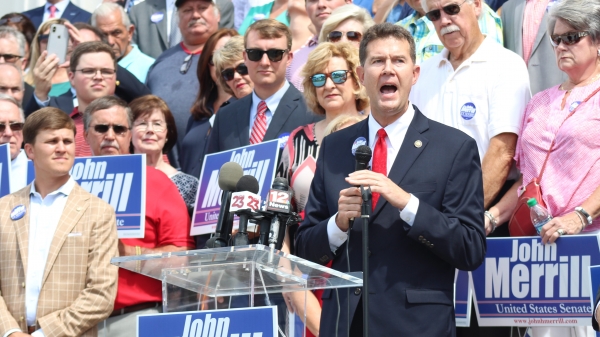By Henry C. Mabry
This is the first in a three-part series focusing on Alabama’s Medicaid issues.
Alabama’s largest state General Fund expenditures are concerning the Alabama Medicaid Program where almost two out of every five dollars is spent on the program. The state General Fund’s contribution to Medicaid has increased from one out of every seven dollars just over a decade ago.
Many policymakers are aghast at the rate of which the state General Fund Medicaid expenditures have increased particularly over the last eight years. Medicaid state General Fund expenditures have increased from right at $300 million a decade ago to roughly $700 million now. The state General Fund rate of growth does appear alarming, but what these same policymakers do not realize is that the state Medicaid program has increased less than all but a couple of states in the country, and that program spending has increased just three percent per year. The two facts just mentioned appear counterintuitive; however, there is a reason for the discrepancy.
Medicaid funding is not as it seems
In Alabama, state agencies are funded with three primary sources of revenue: federal funds, other state funds, and the state General Fund. The state General Fund is approximately $1.8 billion and the state’s $10 billion in state federal funds dwarfs the state General Fund contribution. “Other State Funds” is the second biggest contributor to state government and those revenue sources are also in the billions of dollars. Included in this category, for instance, are motor fuels taxes for Transportation, Medicaid other state funds, certain agency fees, agency earmarked taxes, and proceeds to the Mental Health Trust Fund.
Medicaid is a microcosm of state government finance, but there are more federal dollars and other state funds at play versus the state General Fund contribution as compared to other General Fund agencies. Medicaid program spending is $6.39 billion now. Federal funding is $4.4 billion leaving roughly $2 billion as the state share. Concerning Medicaid, the state General Fund contribution is $685 million, “Other State Funds” amount to $1.3 billion. Of the $6.39 billion program, the state General Fund contributes about one out every nine dollars.
Why is there so much pressure on the state General Fund for more Medicaid dollars? The answer is simple, and it has less to do with health care cost increases than the state Medicaid funding structure. The Medicaid Program grows about three percent a year which means program spending increases $180 million a year–Alabama’s tab for state match is about $60 million of this amount. So, even though Medicaid spending only grows three percent, the state General Fund need is normally going to grow nine percent or more. This is because Medicaid’s $1.3 billion basket of dedicated “Other State Funds” are collectively relatively static year to year (except for provider tax increases which have primarily been raised to the limit although there are a few opportunities in such area). Unlike other state agencies with “Other State Funds,” the Alabama Medicaid Agency’s “Other State Funds” grow little if any, some decline, and some will decline further over time. Other agencies, for instance, benefit from utility, property, and liquor tax earmarking that grow so the state General Fund growth demand upon those agencies is tempered thanks to a modicum of the other state funds growing at least a small amount every year.
In summary of this concept, the Medicaid state share may grow $60 million. Other state funds comprise the biggest portion of state Medicaid funds, but those funds do not grow so those funding sources do not absorb any of the state share hit. This means the state General Fund picks up the $60 million tab if Medicaid is to be funded.
Medicaid state funding needs: up, up, and up
The Alabama Medicaid Agency is currently looking at cutting optional program areas to fund basic required needs as well as fund the new Regional Care Organization (RCO) program. Once optional services are cut, then the agency’s funding need can be expected to grow four to five percent a year thanks to medical care inflation and increased utilization (unless medical inflation spikes again as it has during past periods which would exacerbate this problem). Once the point in time occurs that Medicaid has exhausted cutting optional services, then program costs can be expected to grow $280 million or more per year with the state tab being $80 million to $100 million in new money needs each year from the state General Fund.
Assuming the midpoint of the latter amount, basic cost increases can be expected to hit the state General Fund every year by $90 million extra, with such amount growing $3 million or more each year thereafter in a compounded fashion. For a state General Fund that is anemic as it is with normal growth around two or three percent, Medicaid demand for five percent more of the state General Fund every year will become even more problematic. This is why Medicaid has gone from sucking one out of every seven General Fund dollars to two out of every five dollars. At such a rate concerning the open ended nature of the agency, Medicaid will soon absorb half of the state General Fund and more as time ticks away and some agencies (with their own funding challenges) are going to have to absorb three percent of the difference if Medicaid is funded, or the Alabama Legislature is going to be faced with raising revenue.
Dr. Henry C. Mabry served as State Finance Director from 1999-2003. He currently heads Mabry & Co., and can be reached at henrycmabry@aol.com













































